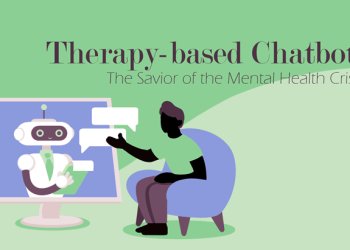The UK’s health and welfare systems are facing intense scrutiny, with a growing debate over the rise in mental health diagnoses and its impact on government policy. Recent remarks from Health Secretary Wes Streeting, who suggested that “overdiagnosis” of some mental health conditions was contributing to welfare system strain, have sparked widespread criticism. His comments echoed Prime Minister Rishi Sunak’s earlier claim that a “sicknote culture” was affecting Britain’s economy. These statements have raised concerns about perpetuating harmful stereotypes, particularly regarding young people’s mental health.
However, media coverage of Dr. Suzanne O’Sullivan’s book, The Age of Diagnosis, has lent credibility to the notion that diagnosing mental health conditions can, at times, limit individuals’ opportunities. As the government moves forward with plans to cut personal independence payments (PIP) in response to a rising disability benefits bill, the role of mental health diagnoses in this context is more critical than ever.
Rising Disability Benefits and Mental Health
The UK government has been grappling with a surge in disability benefit claims, particularly among working-age adults experiencing mental health problems. Between 2019 and 2024, the total spending on disability benefits rose by nearly £13bn, reaching £48bn. A significant portion of this increase is attributed to claims linked to mental health conditions. According to a report by the Institute for Fiscal Studies (IFS), mental and behavioral disorders accounted for 25% of disability benefit claims in 2002; by 2024, that number had nearly doubled to 44%. Furthermore, over half of the rise in disability benefits post-pandemic can be traced to mental health-related claims.
Experts, however, caution against oversimplifying the issue. Dr. Darío Moreno-Agostino, a population mental health researcher at UCL and King’s College London, points to socioeconomic adversity as a fundamental cause of increasing mental health issues. He argues that rising mental ill-health is not a result of overdiagnosis but is rather driven by structural factors like poverty, inequality, and the disruption caused by the pandemic. Moreno-Agostino’s analysis of longitudinal data supports this claim, showing that all generations tracked during the pandemic reached their worst mental health levels in four decades.
Increased NHS Mental Health Demand
NHS records provide further evidence of a growing mental health crisis. Between 2019 and 2024, the number of people seeking mental health services increased by 600,000, a 45% rise in just five years. The Care Quality Commission reported that urgent referrals to adult crisis teams in June 2024 were 45% higher than the previous year. Experts such as Prof. Daisy Fancourt, head of social biobehavioural research at UCL, confirm that the rise in demand has been met with increasing severity of cases. As a result, services are struggling to manage the growing need, often unable to address less severe cases due to the focus on critical ones.
Fancourt, along with other experts, dismisses the idea that overdiagnosis is to blame for these trends. She argues that the challenges young people face today—ranging from poverty and housing insecurity to the impact of social media and global crises—are central to the rising incidence of mental health conditions. These challenges, she notes, have been compounded by the pandemic.
Inequalities in Diagnosis
In addition to the growing demand for services, there are significant inequalities in how mental health diagnoses are distributed. Research by Prof. Susan McPherson from the University of Essex reveals that many people with severe mental distress remain undiagnosed, while a small number receive questionable diagnoses. McPherson’s study, which analyzed UK Longitudinal Household Study data, found that there were 12 times as many people with undiagnosed distress as there were individuals with “overdiagnoses” of mental health conditions.
Moreover, people with disabilities are nearly three times more likely to experience undiagnosed distress compared to non-disabled individuals. Women, too, face higher rates of undiagnosed mental health issues. McPherson criticizes both over- and under-diagnosis, noting that the healthcare system’s inability to address these disparities stems from deeply ingrained societal biases around normality, particularly those rooted in patriarchy and ableism.
While McPherson challenges the overdiagnosis narrative, she is also critical of the increasing medicalization of mental health. She argues that simply diagnosing individuals is not the solution to the broader issues at play. Rather, a more nuanced approach—one that considers social and economic factors—is needed.
The Role of Social and Economic Adversity
Experts agree that the root causes of the rise in mental health issues lie in social and economic adversity. In response, the NHS has expanded social prescribing programs, which aim to address mental health through community-based solutions rather than medication alone. Social prescribing has proven effective in providing holistic support to patients, connecting them to hobbies, volunteering, social activities, and practical resources like housing support.
However, social prescribing has faced criticism. A study of 6,500 individuals found limited evidence of its efficacy, and some patients reported feeling dismissed by the program. Nonetheless, Prof. Fancourt highlights that demand for social prescribing has been unexpectedly high, especially among young people on mental health waiting lists. She views it as an asset-based approach that focuses on strengthening individuals’ skills and identities, rather than framing them through a medical deficit.
Welfare System’s Role in Mental Health
The welfare system’s approach to mental health also contributes to the current debate. Dr. Annie Irvine, a social policy lecturer at the University of York, argues that the welfare system’s binary approach—whether a person is fit for work or ill—fails to account for the broader issues people face, such as housing insecurity, relationship breakdowns, or domestic violence. This narrow focus, she says, exacerbates the difficulties people with mental health issues experience.
Irvine is not disputing the legitimacy of mental health distress but notes that worklessness is influenced by much more than just mental illness. To address the rising number of disability claims, a more holistic view of the social and economic factors at play is essential. She suggests that recent proposals in the government’s green paper indicate a recognition of these broader challenges.
The Political Dimension of the Debate
The notion of “overdiagnosis” has become a politically convenient narrative, particularly as the government seeks to reduce welfare spending. Prof. Ewen Speed, a medical sociologist at the University of Essex, argues that framing the issue as one of overdiagnosis deflects attention from the social inequalities that lie at the heart of the mental health crisis. He believes this narrative serves to downplay the deeper structural problems, including economic inequality and a strained social welfare system.
As the UK navigates the complexities of mental health and welfare reform, experts continue to call for a more comprehensive approach that integrates social, economic, and medical considerations. Until these broader issues are addressed, the challenges surrounding mental health diagnosis and treatment will likely persist, with ongoing debates about overdiagnosis continuing to shape the conversation.
Related Topics


































